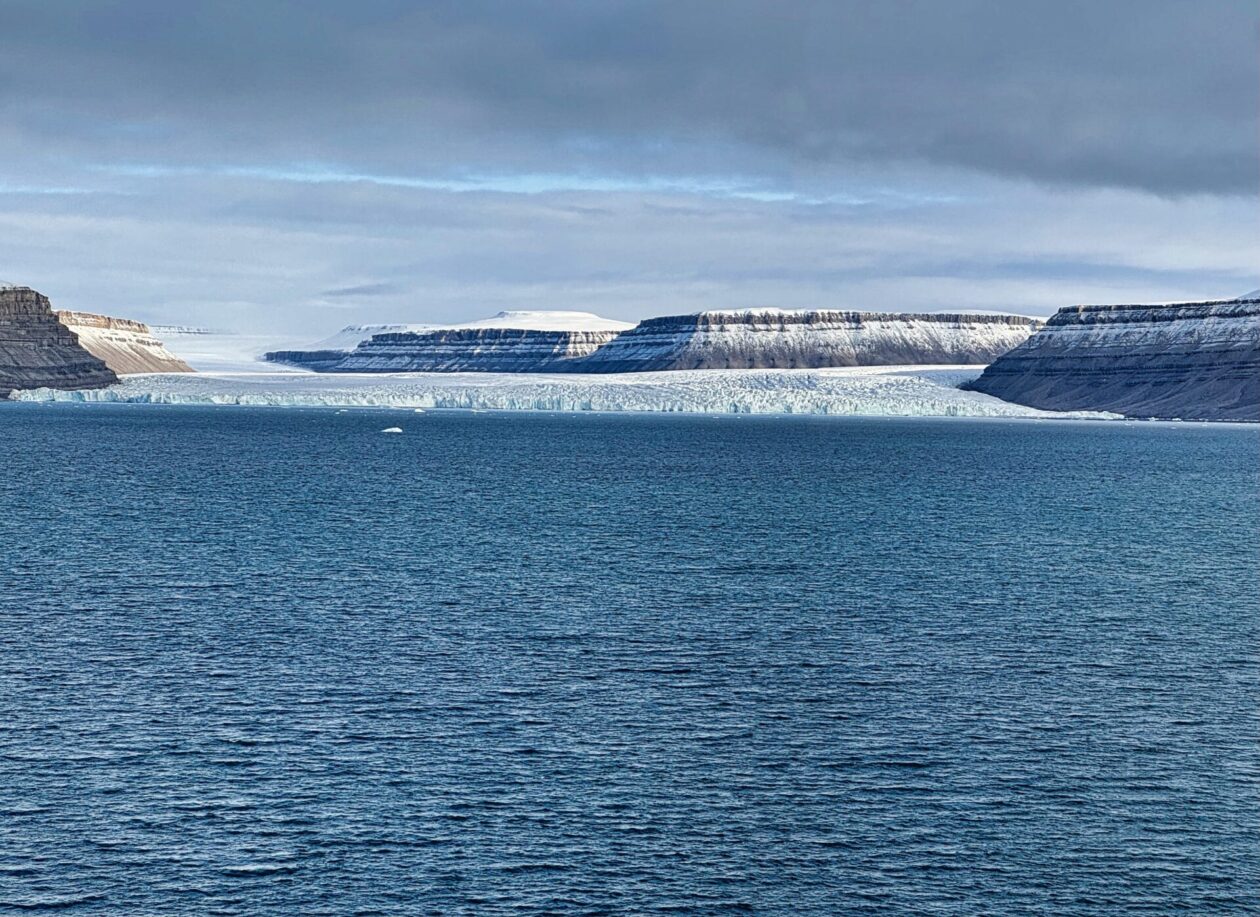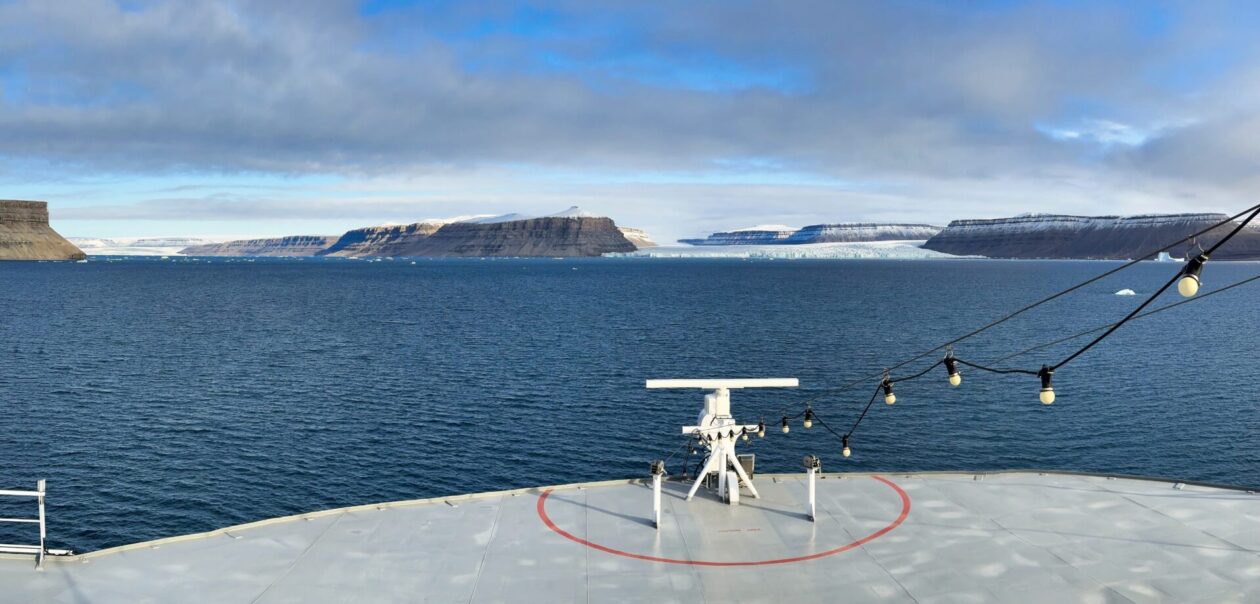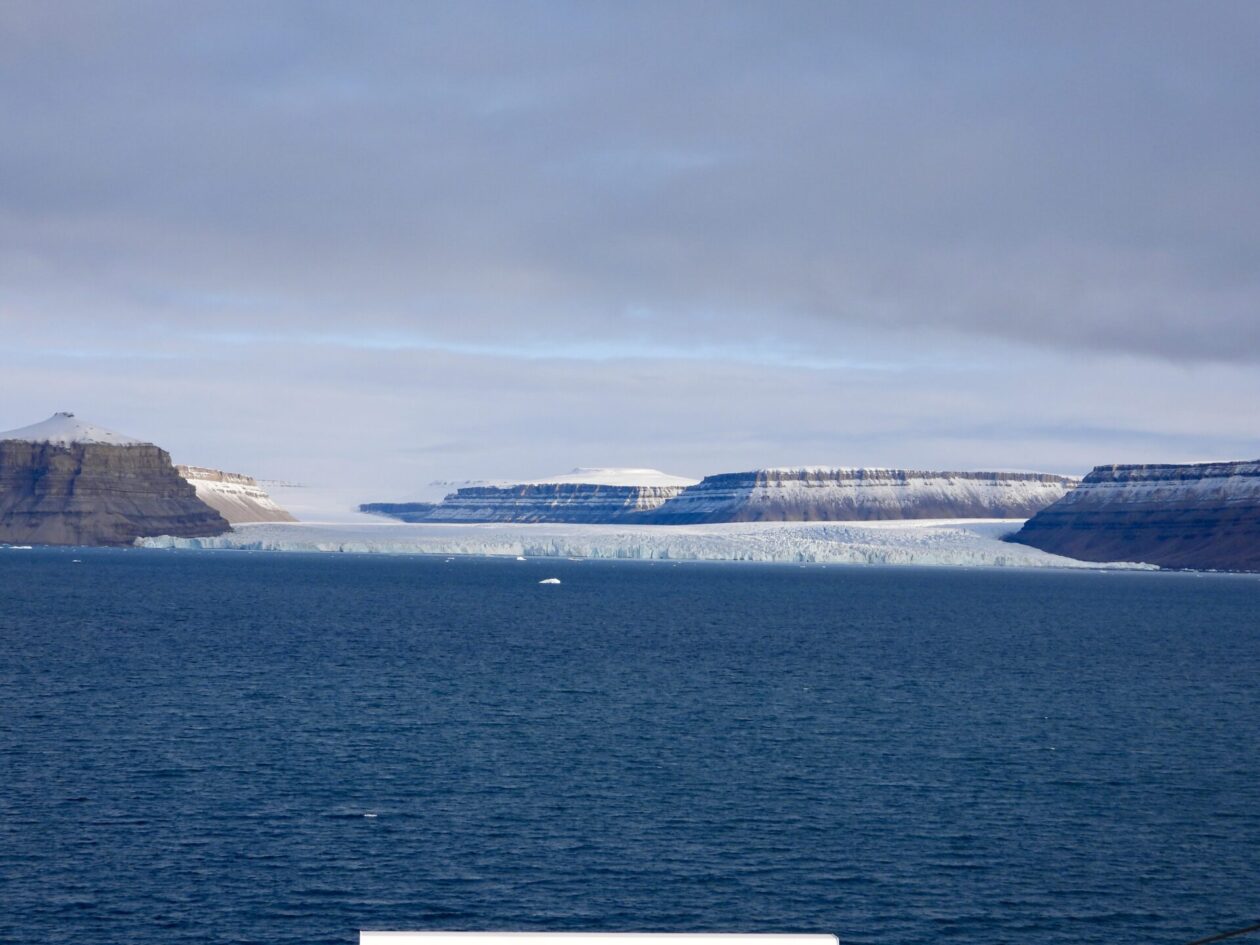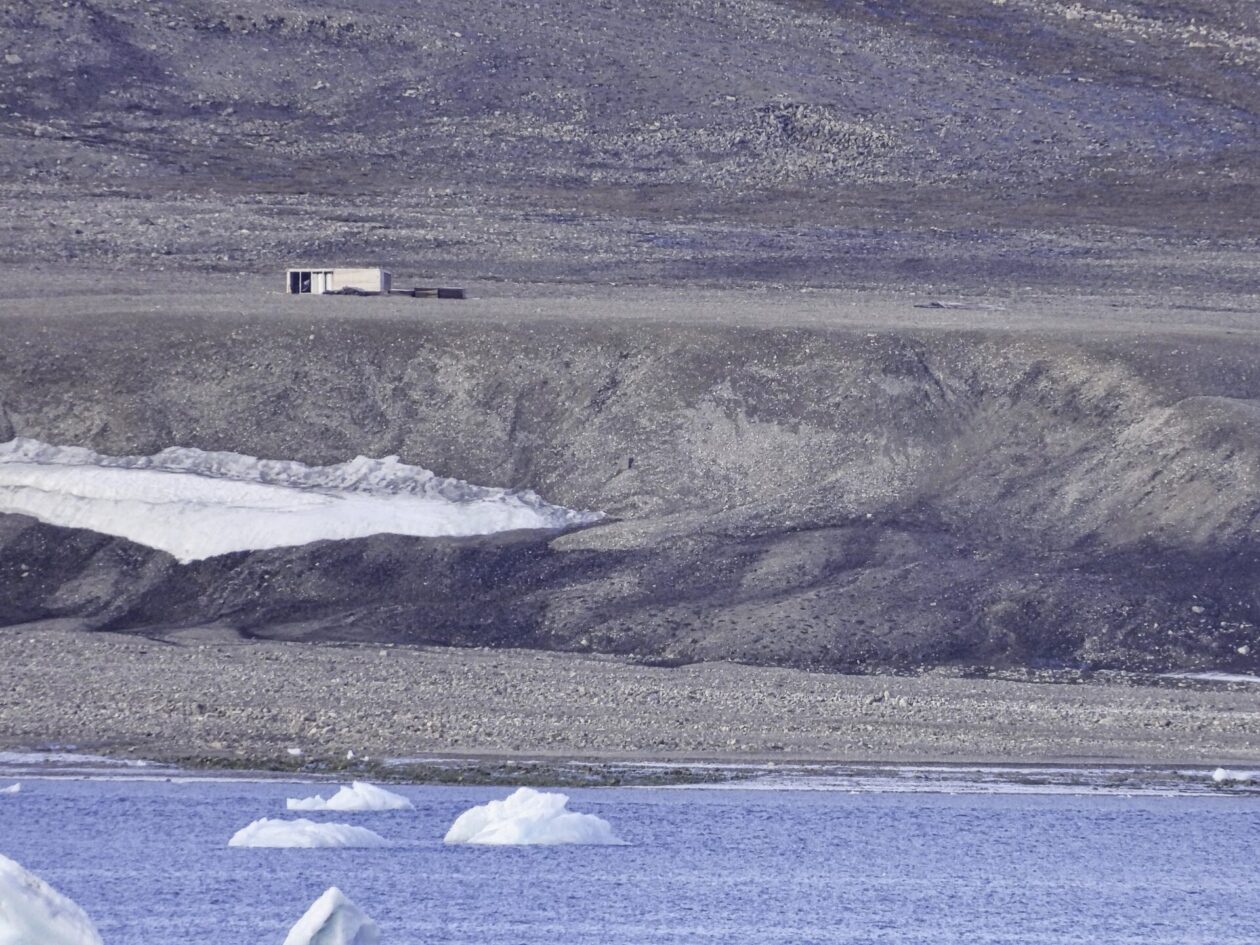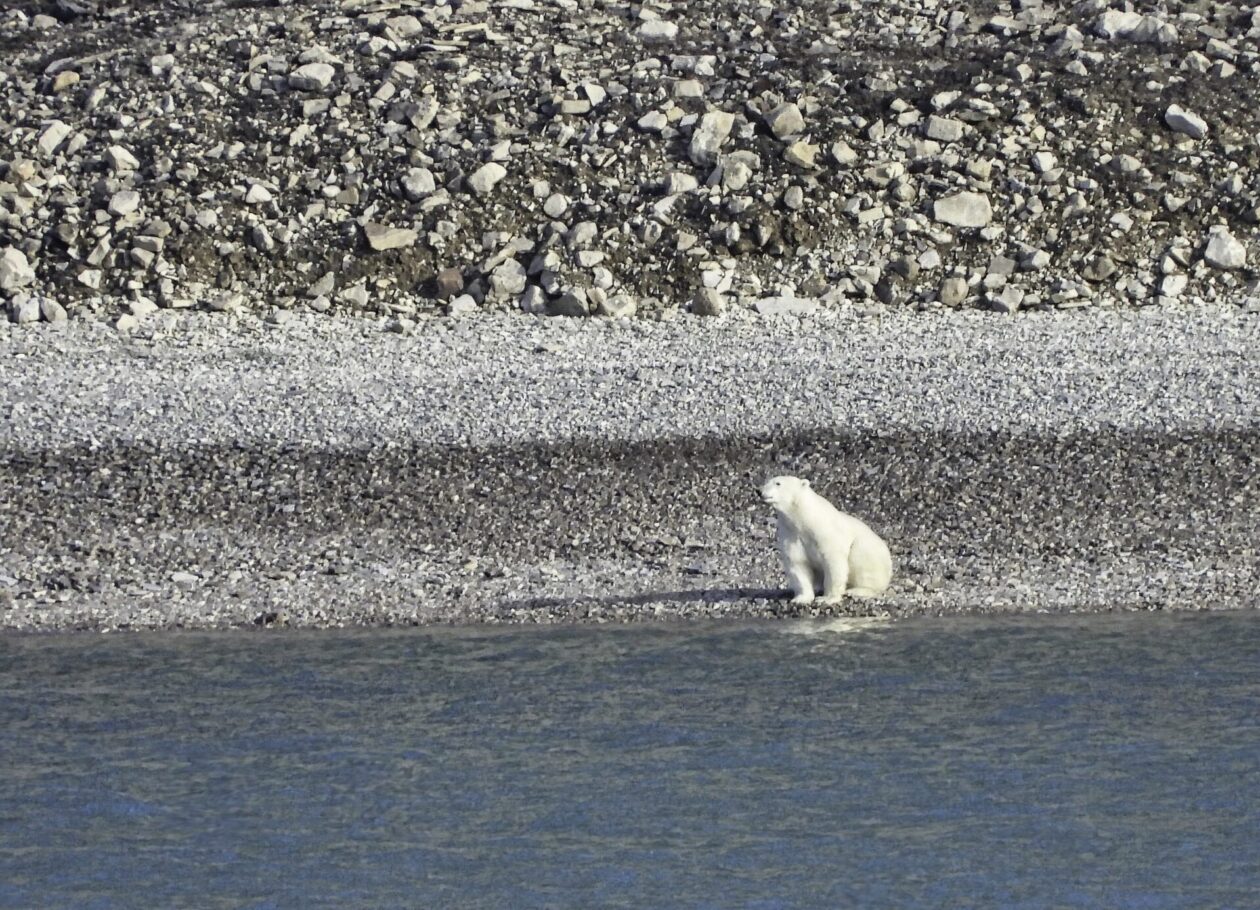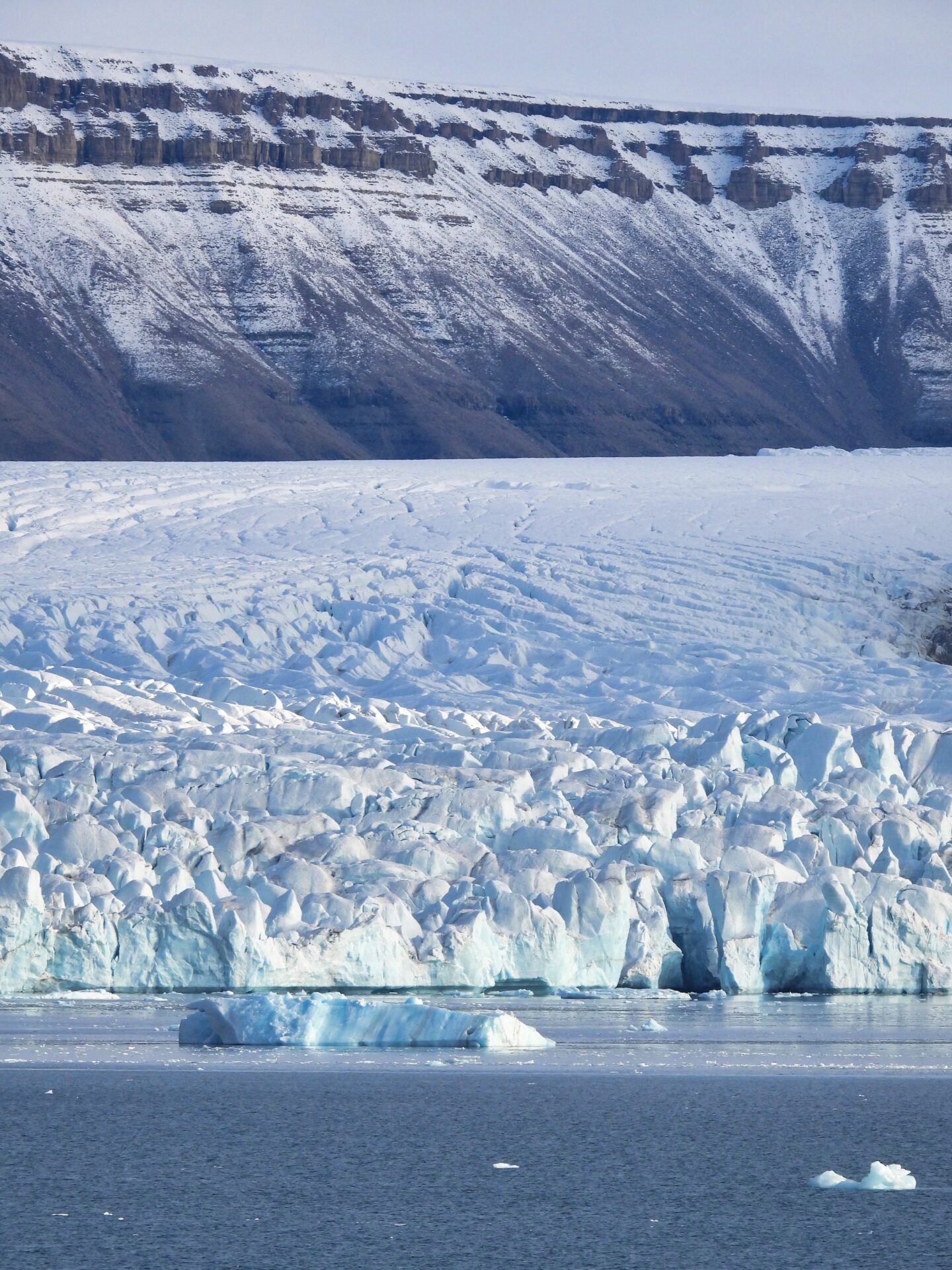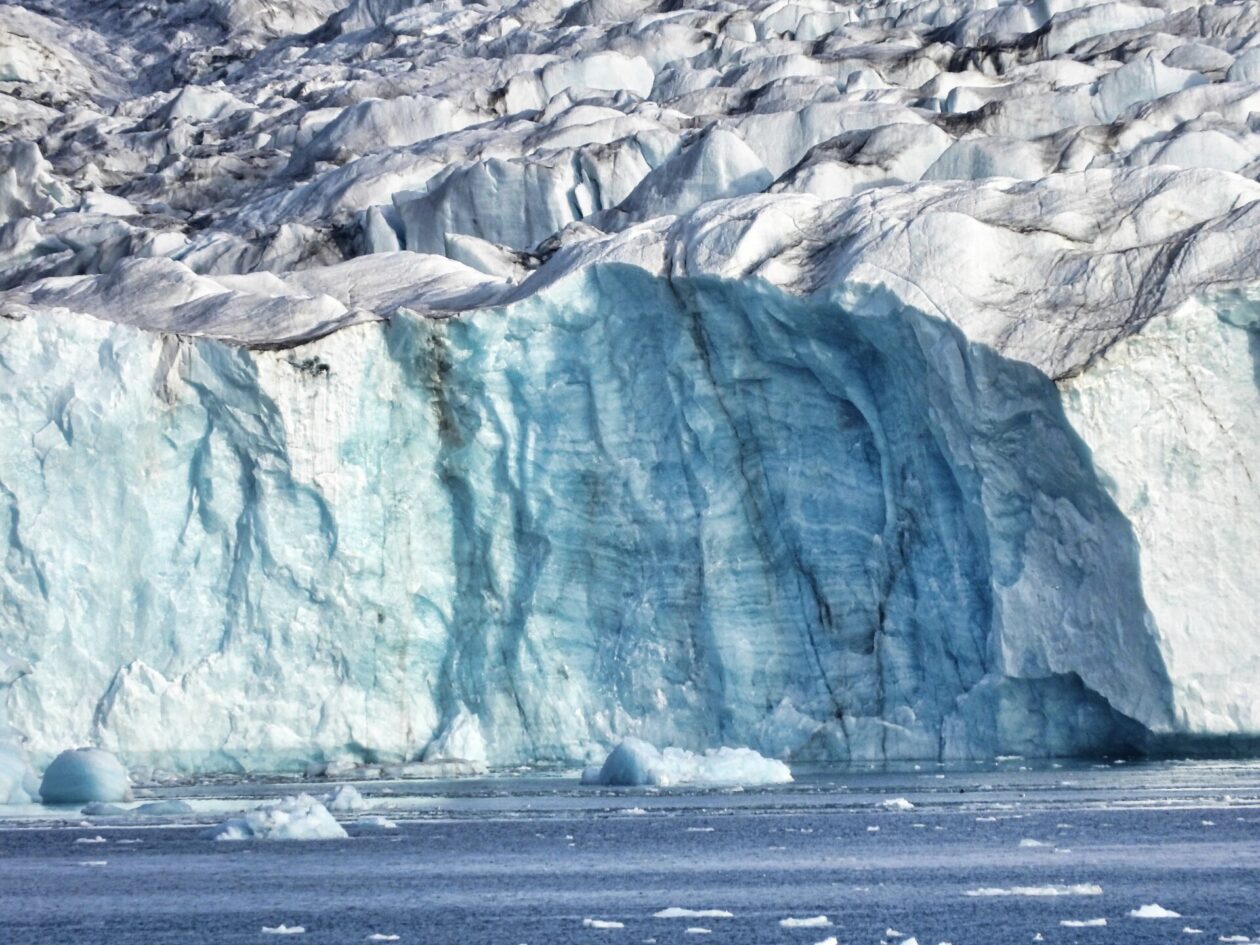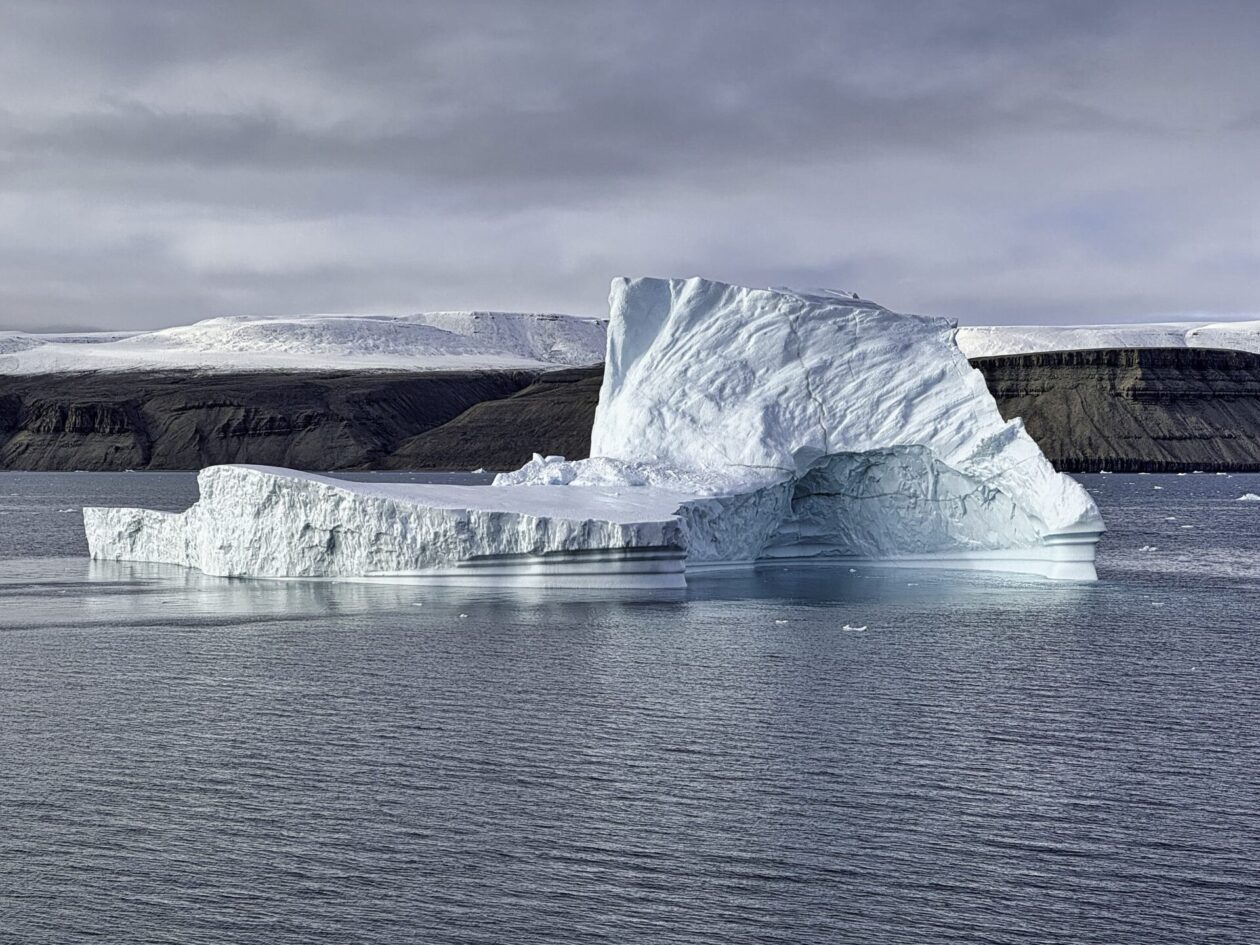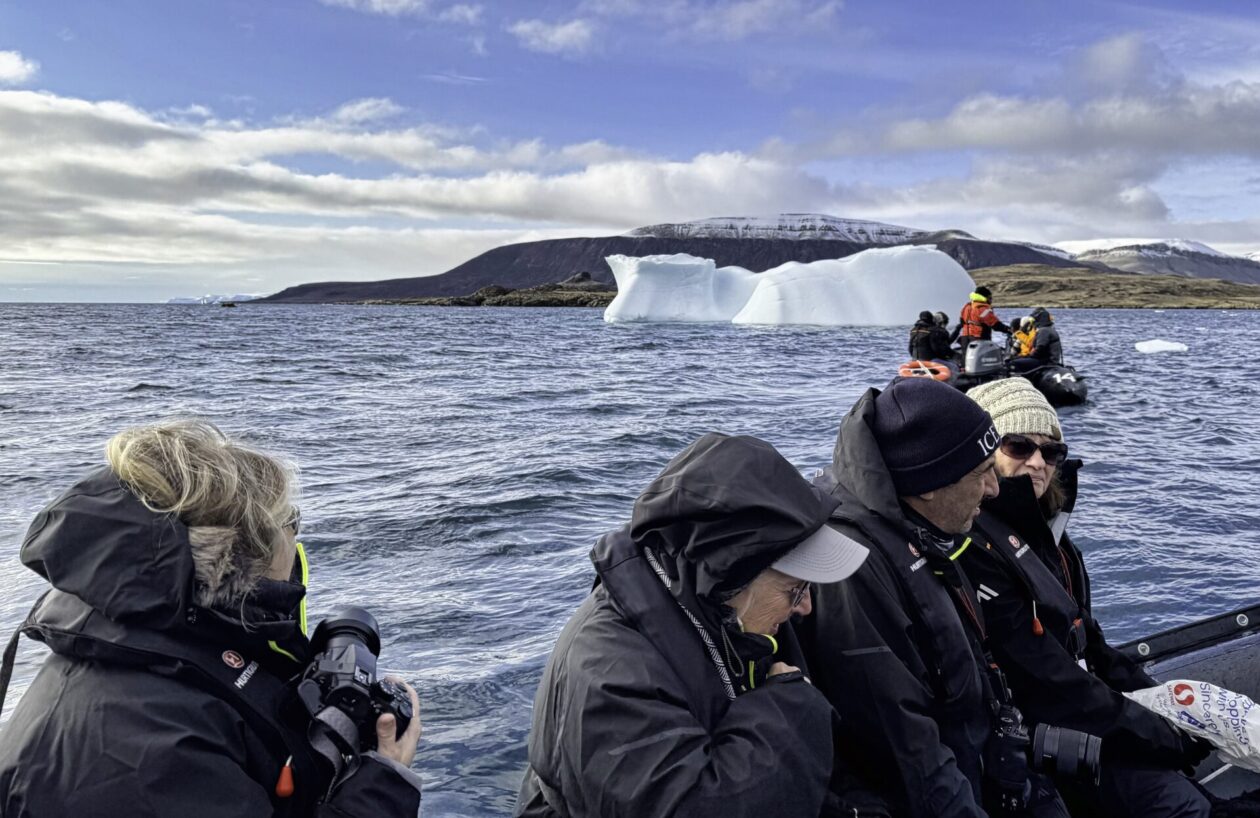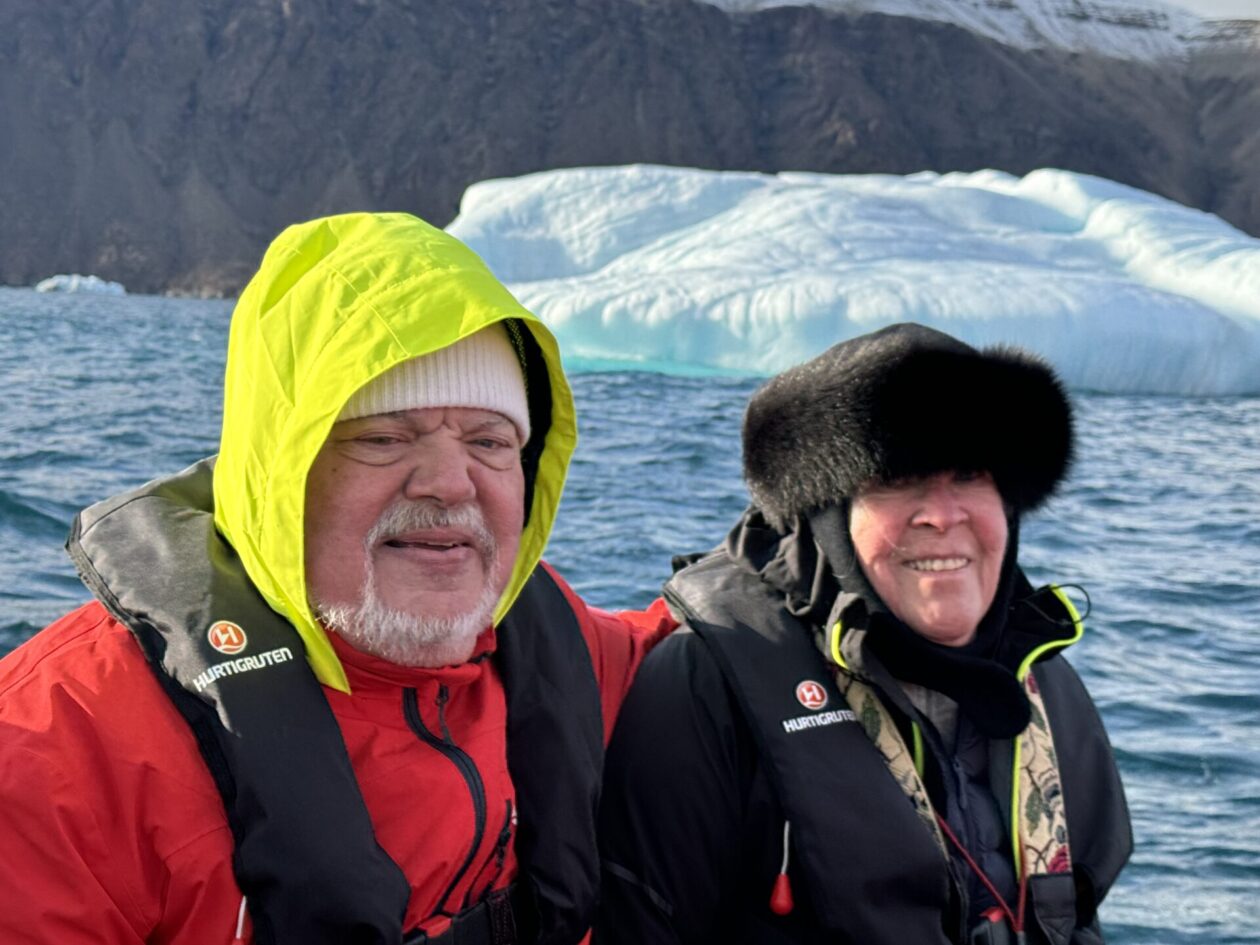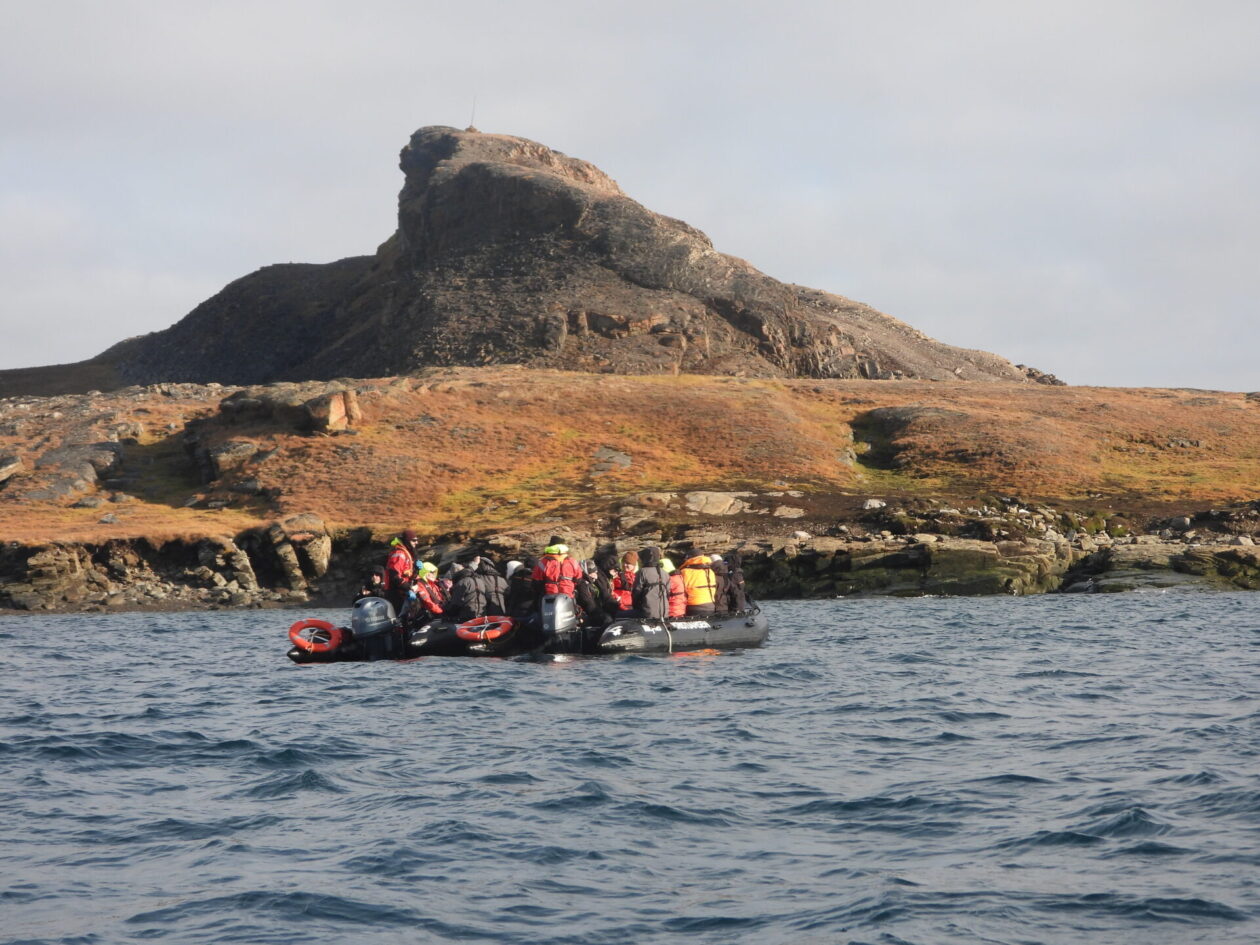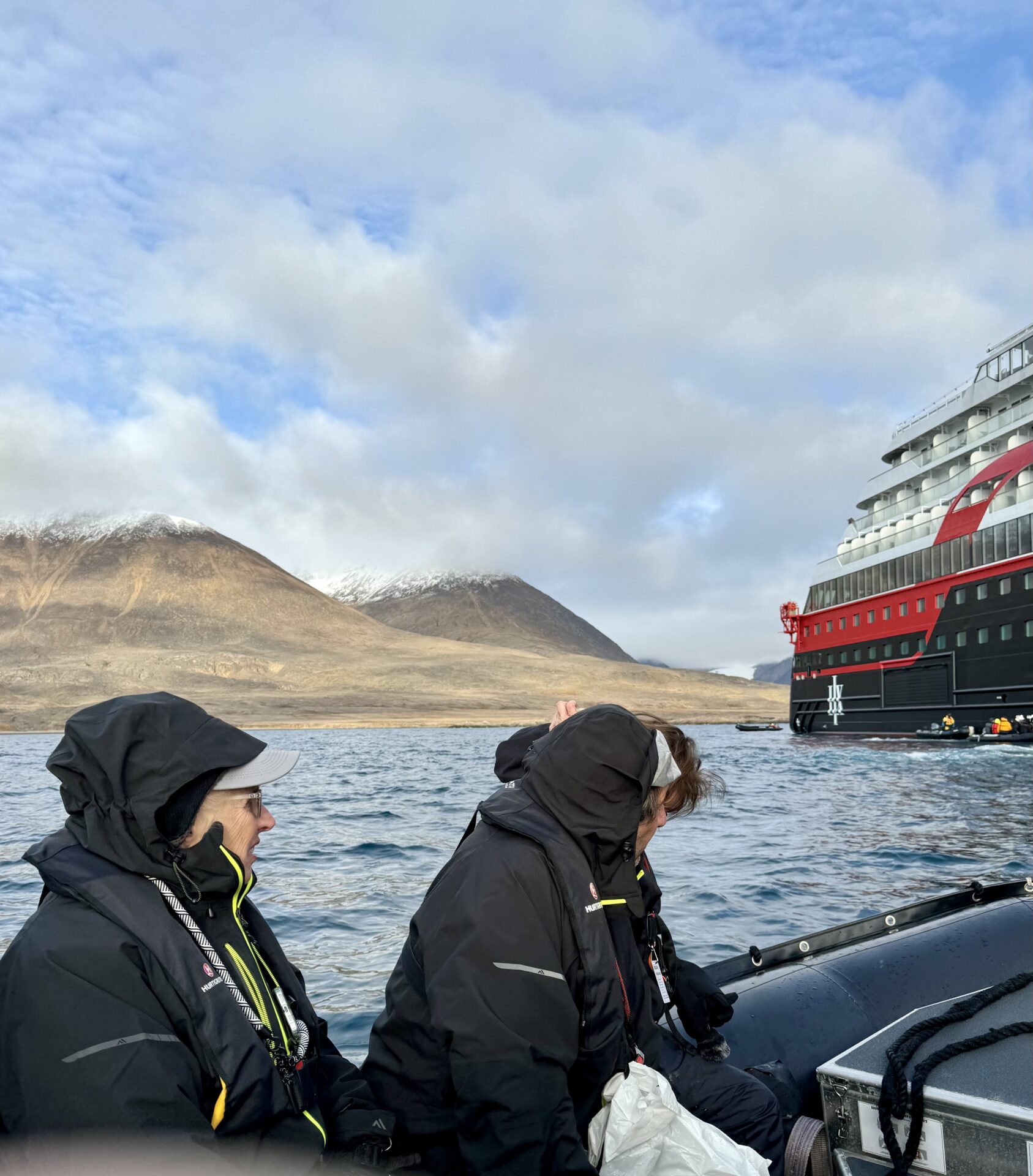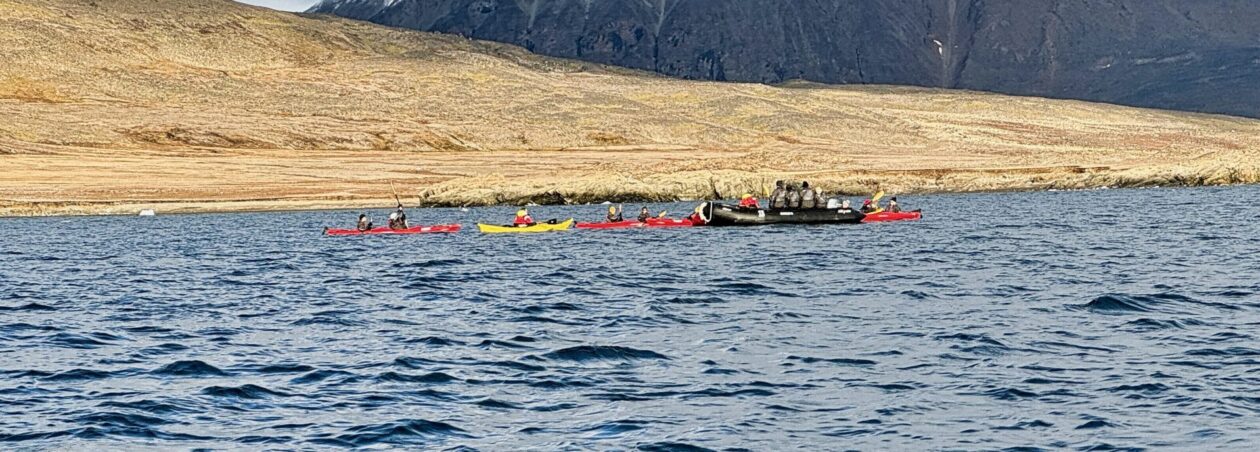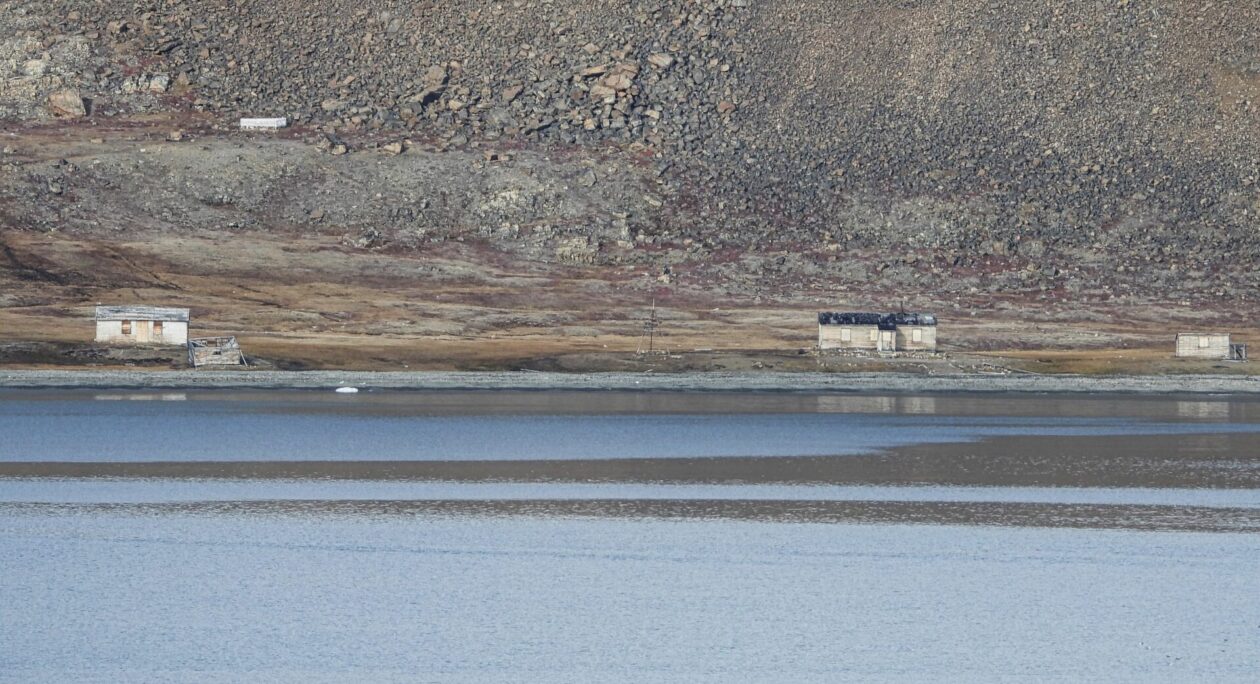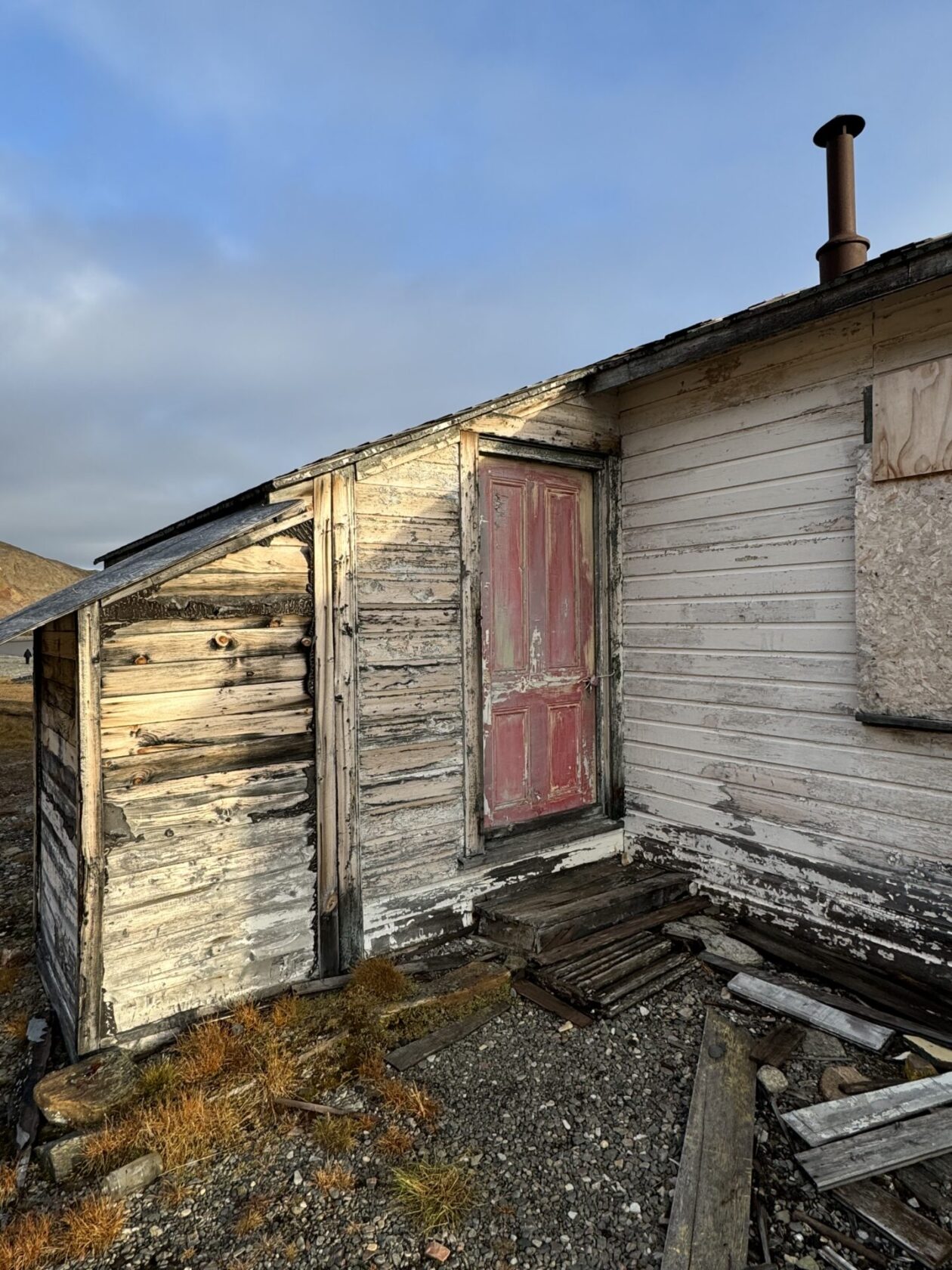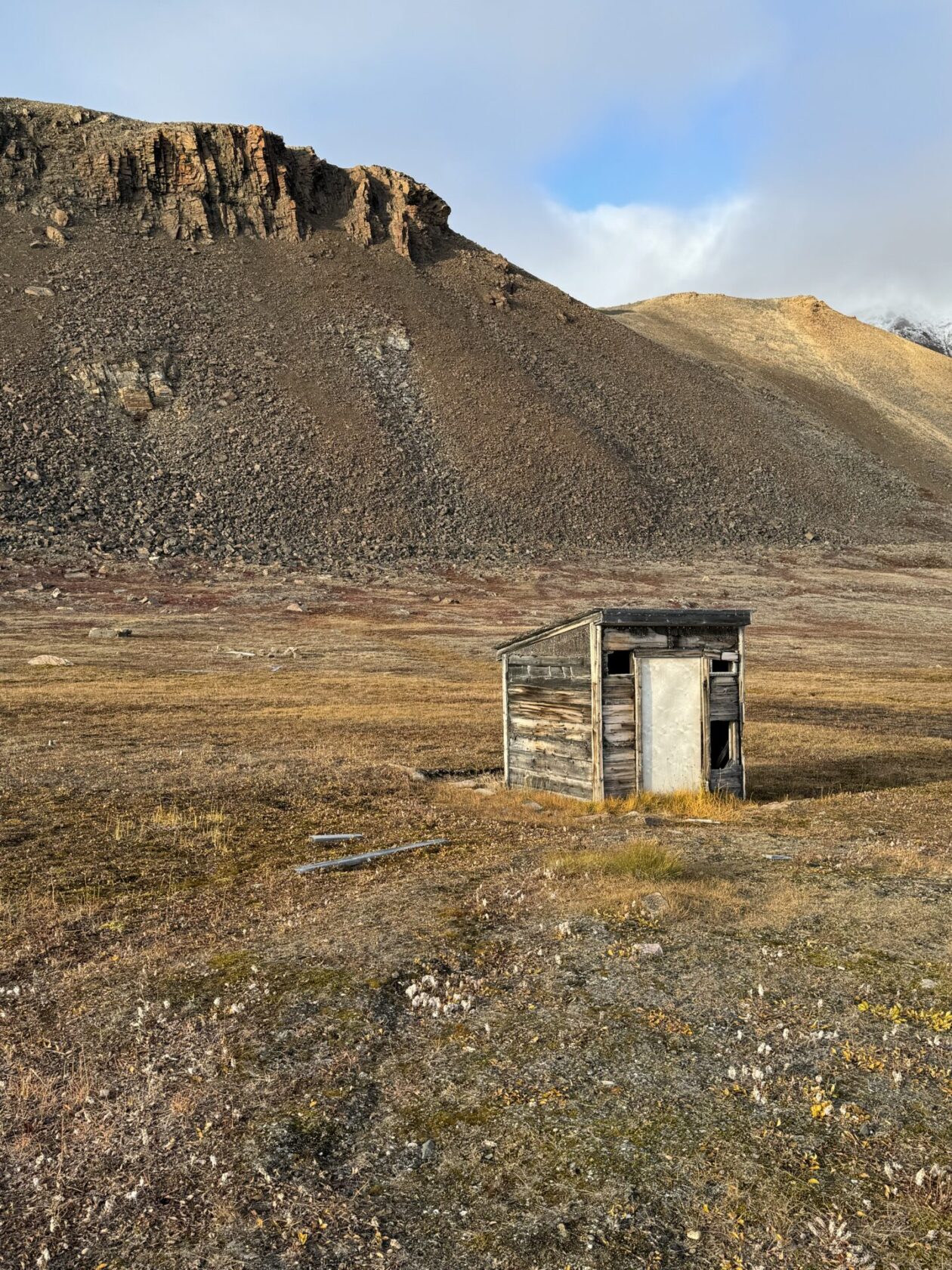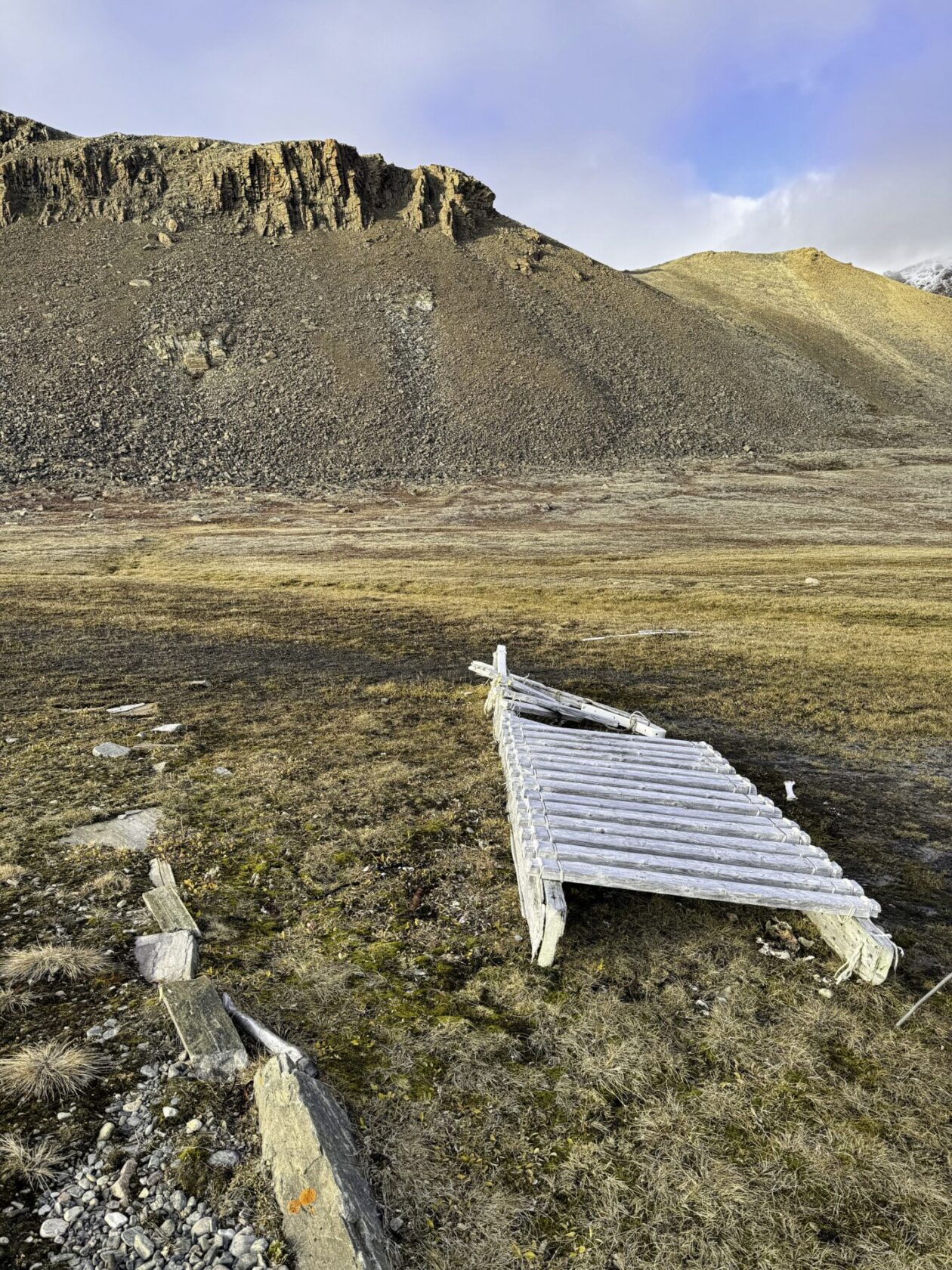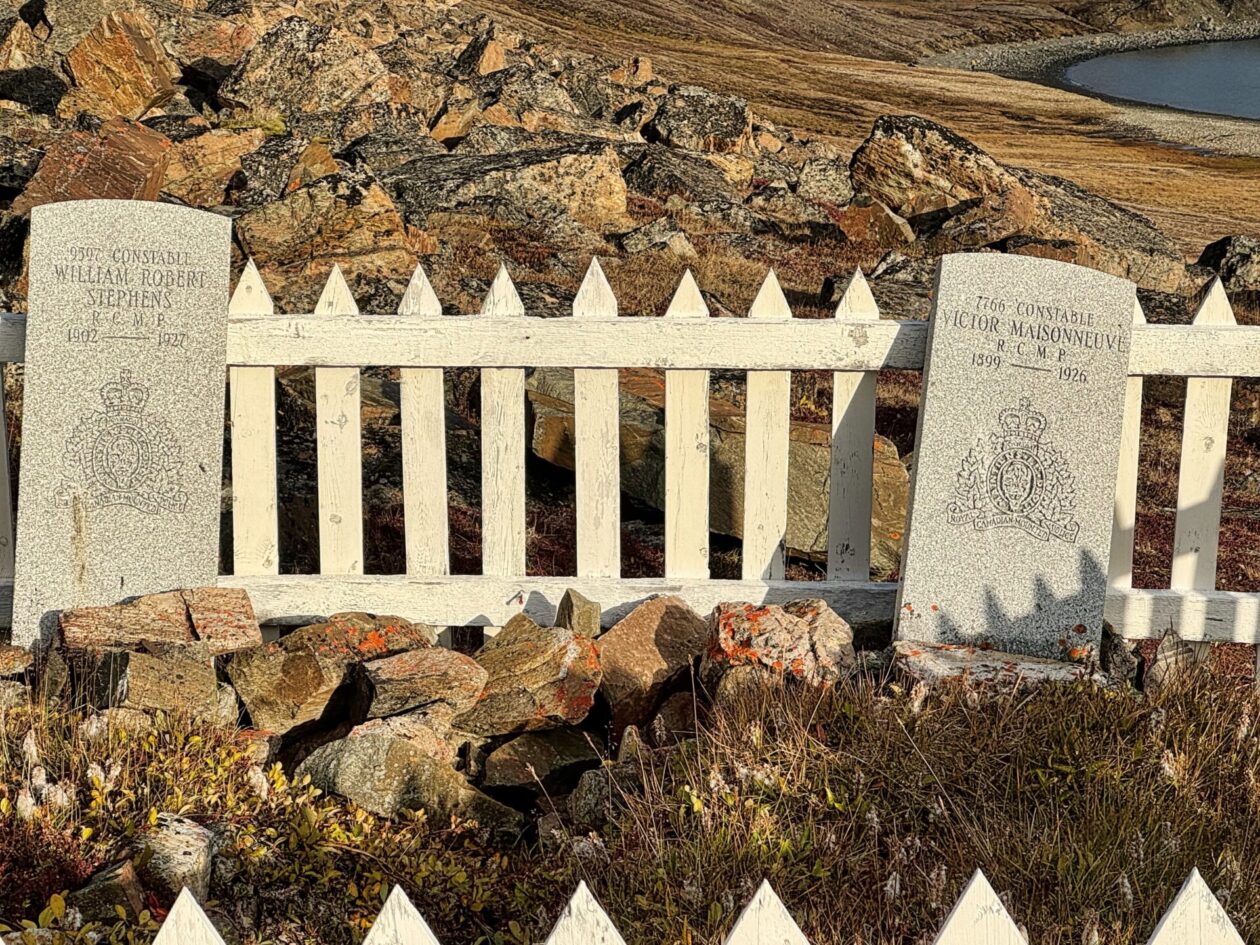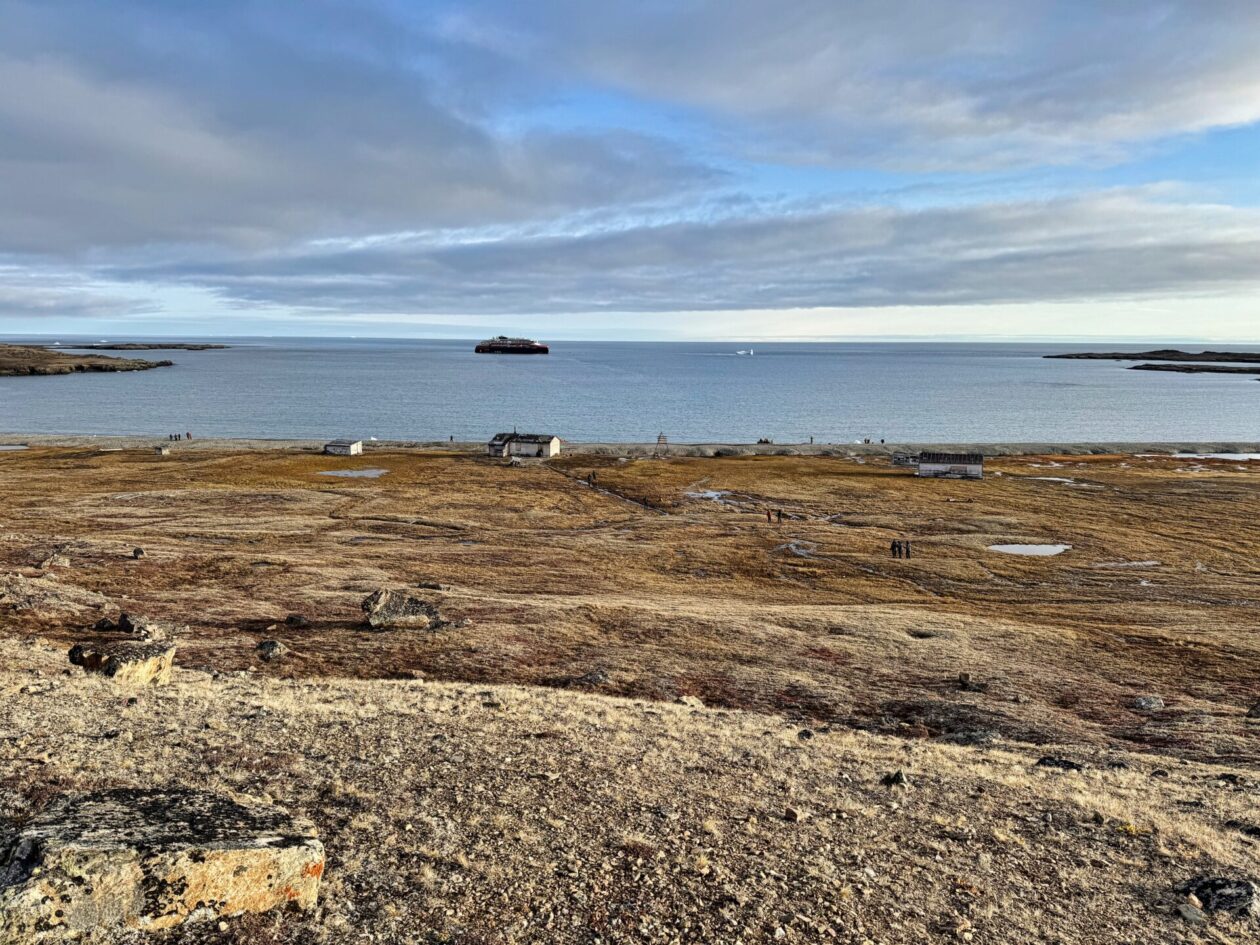- Start of trip and Nome, AL
- Herschel Island, Yukon, Canada
- Sea Day, a surprise, and the Smoking Hills, Northwest Territories, Canada
- Ulukhaktok, Northern Territories, Canada
- Murray Island, Nunavut, Northern Canada, Canada
- Cambridge Bay, Nunavut, Northern Canada
- Citizen science and Borge Island
- Gjoa Haven, Nunavut, Northern Canada
- A busy day at sea — polar bears, musk ox, and plankton, oh my!
- Prince Leopold Island, Beechey Island, and Radstock Bay, Nunavut, Northern Canada
- Croker Bay and Dundas Harbor, Nunavut, Northern Canada
- Pond Inlet and the Inuit, Nunavut, Northern Canada
- Ilulissat, Greenland
- Sisimiut, Greenland
- Red Bay, Labrador, Canada
- Corner Brook, Newfoundland, Canada and end of trip
Today we found ice again — in a big way! Croker Bay is a fjord on the south coast of Devon Island on the Lancaster Sound. The island itself was named by William Baffin in 1616 for Devon shire in England. It has an extensive ice cap and the the glacier in Croker Bay is fed by it. The bay was named by William Parry in 1819 in honor of the First Secretary to the Admiralty. The glacier has been receding for some years, but it still reaches the sea. We started the day by having the ship pull close to the glacier’s mouth on the bow and port side. From the water, it looks like these are separate glaciers but they are, in fact, one large glacier. Since the glacier calves quite often, there are icebergs in the foreground, with lots of blue crevasses and waterfalls in the background. We did see a polar bear on the shore, but were surprised that we didn’t see any birds, seals, or any other wildlife for that matter. We stayed outside taking pictures for a while but it is freezing and the wind is blowing quite hard. Very cold!
During the afternoon, we went Zodiac touring — in this case to inspect some icebergs up close and personal. For those that don’t know, there is a difference between sea ice and icebergs; both of which we have seen on this trip. Sea ice is just that — ice that freezes within the seawater. It is typically quite “young.” Icebergs on the other hand, calve (or break off) a land-based glacier and float around. As you know, some of these can be quite huge. In any case, iceberg ice can be thousands of years old. On our Iceland trip, we actually captured some for cocktails. How often can you say that your vodka and tonic has thousand year old ice cubes. Anyway, we traveled into a nearby bay. The walls here, as well as the ones in Croker Bay are made of pre-Cambrian rock dating back nearly two million years. Ironically, the snow covered peaks are actually made of limestone that is much younger and sat on the top of the pre-Cambrian rock when they were pushed upward. It was a great tour, especially since the Science Team leader (Sonya) was leading it.
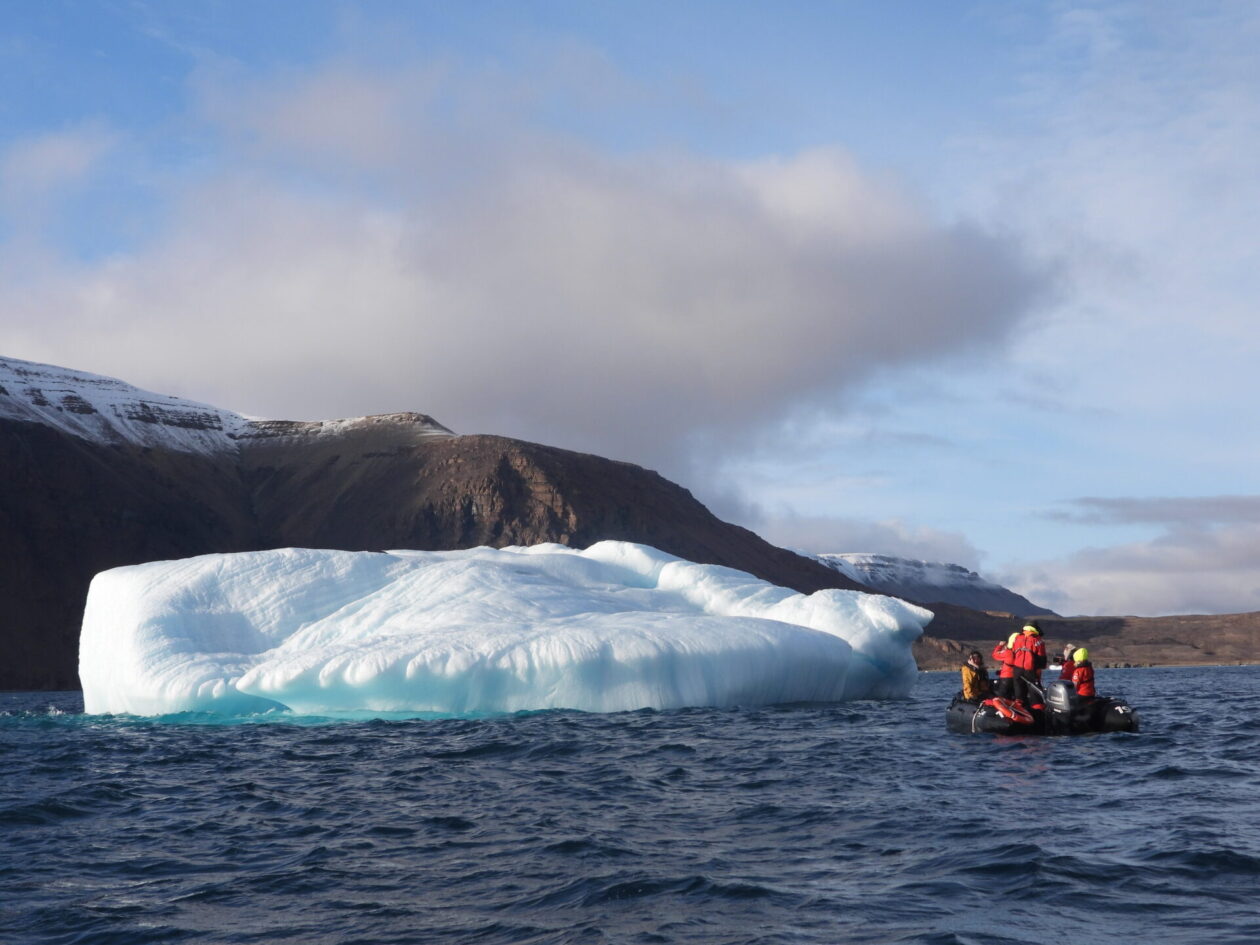
Late in the day, we made a shore landing at Dundas Harbor. This area was originally settled by Inuit. In fact, there are still some ruins of sod houses, whale ribs, kayak stands, and polar bear traps made out of stone. But as the years went by, this area began to dramatically cool and the Inuit migrated to more habitable Arctic regions. That’s how things were when the Parry expedition arrived. Six decades later, Britain ceded the northern mainland and all the adjacent islands to Canada. But never having been up there, and not knowing what they had, they more or less did nothing. For several years, explorers like Amundsen and Sverdrup studied and mapped the area; Sverdrup even tried to convince Norway to claim it. Finally, in the early 1900s, Canadian expeditions were sent to lay out plaques, identifying the land as Canadian. When they learned that Greenlanders were hunting without a permit, Royal Canadian Mountain Police (RCMP) stations were set up here and Ellesmere Island. Staffing these posts was difficult and the work hard. We visited the cemetery there that contained two Mounties — one who committed suicide and the other who accidentally shot himself. Ultimately, Norway renounced any claims to the area and the operation was too expensive for the Canadian government to cover. As a consequence, the post at Dundas was given to the Hudson’s Bay Company (HBC) as a trading post. Needing people to trade with, they convinced (coerced) 52 people to move there from Baffin Island, but the winters there were terrible and the HBC post closed, leaving most of the Inuit to fend for themselves — or to accept multiple relocations to other HBC posts. Those pesky HBC people — they were behind the Pig War on San Juan Island too! Walking around the site was somewhat moving and messy (another bog), but the most amazing thing was seeing a Beluga Whale just as we were getting ready to get back on the Zodiac. He was going back and forth about 15 yards offshore. I think he was getting a bit anxious that we were in his territory.
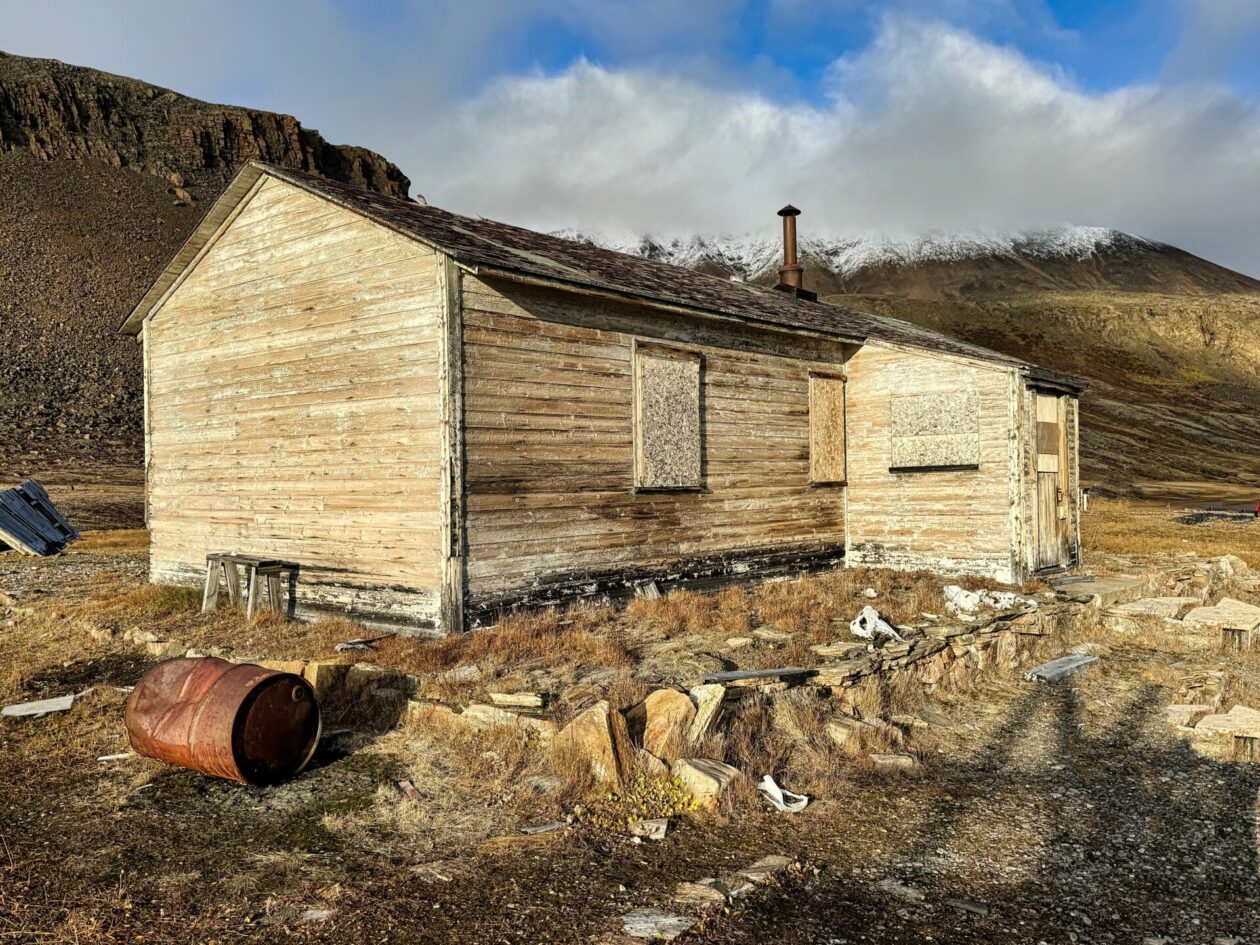
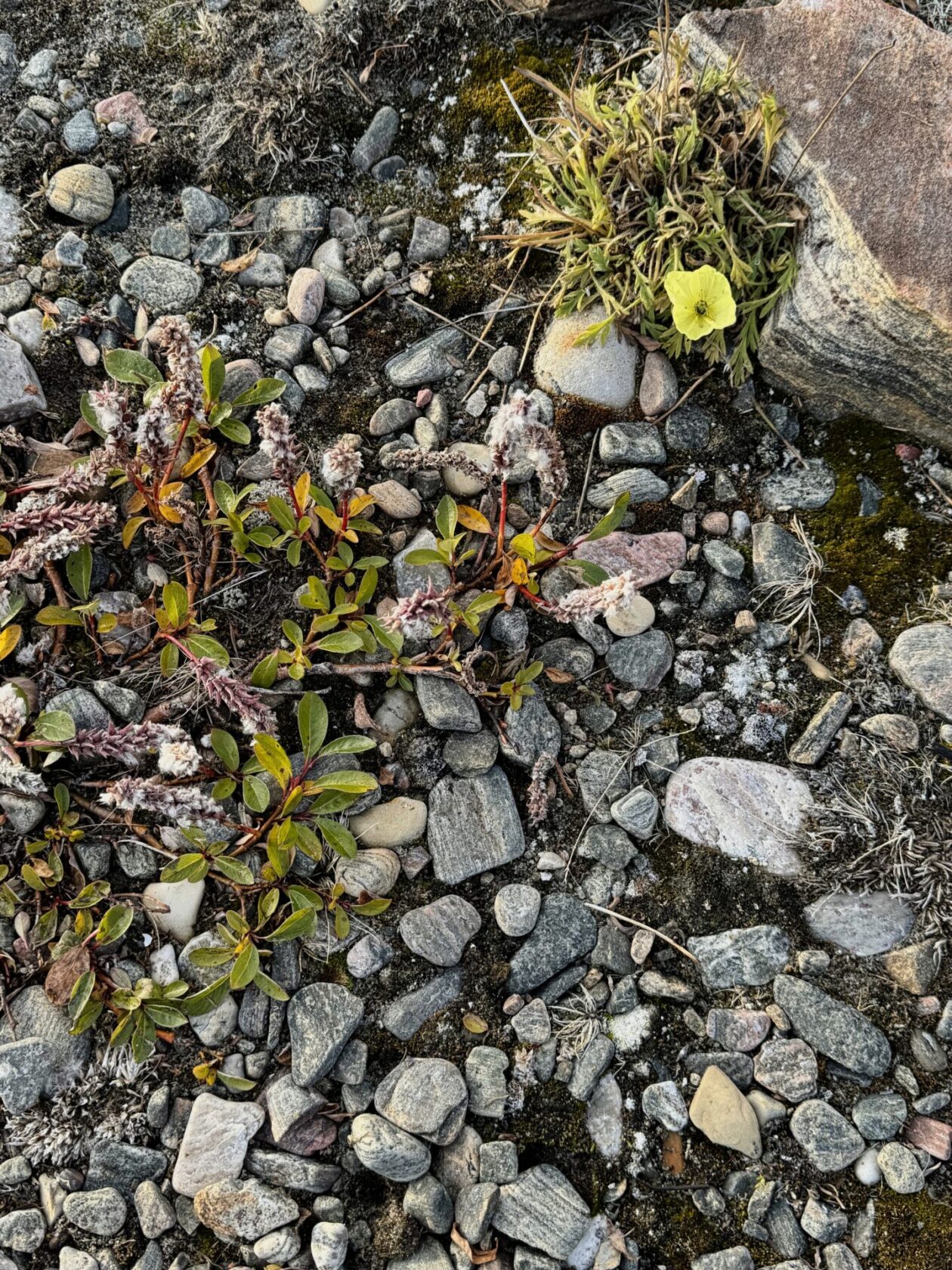
Tomorrow, we pass by Pond Inlet — marking the end of the Northwest Passage. From there, we head east for Greenland!
This entry was posted in Canada, Cruising, Northern Canada, Nunavut, Travel